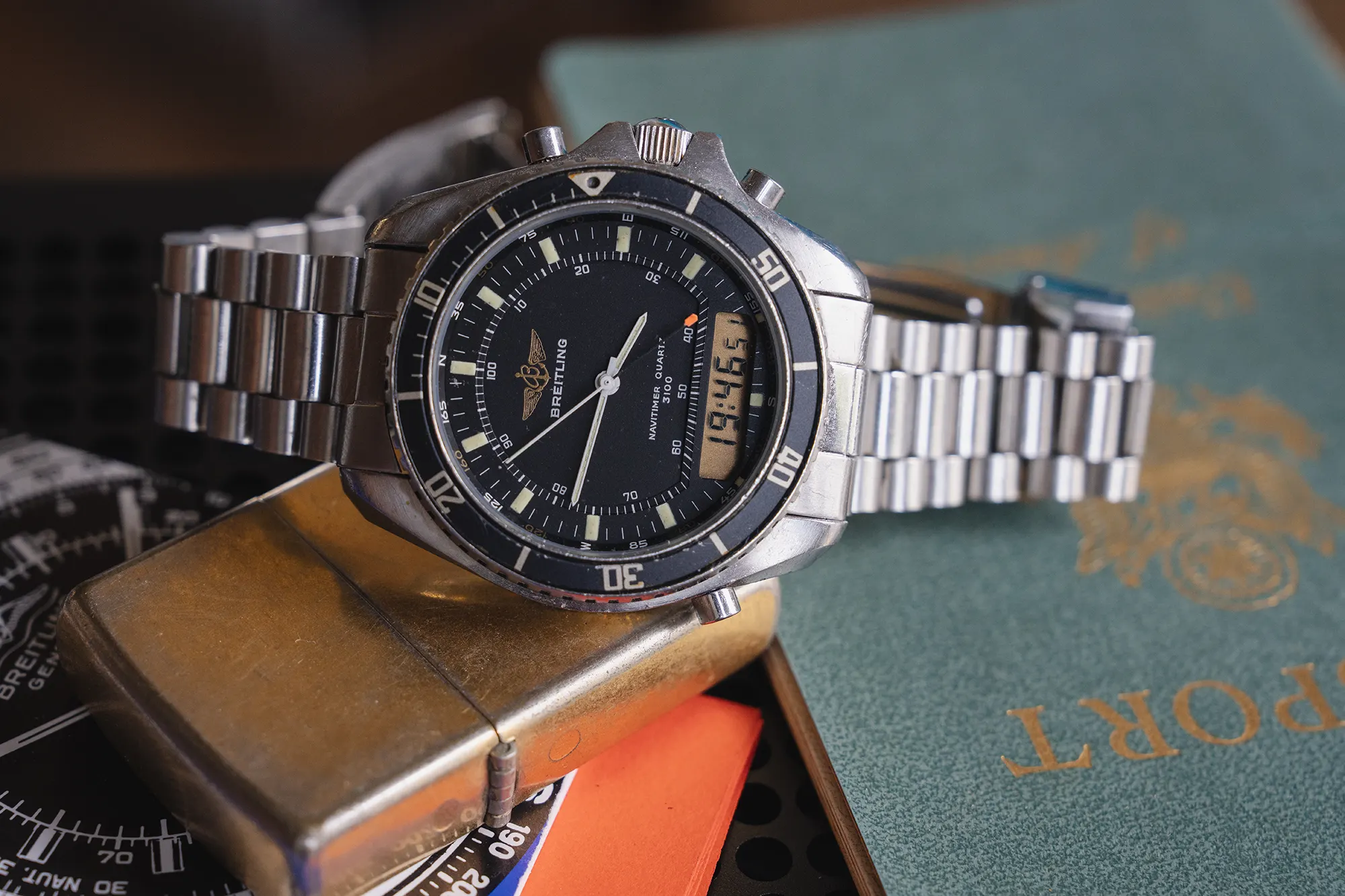Breitling has a storied past, and whatever your thoughts on their modern watches, there’s no denying the strength of that DNA. There are more than a few gems to be discovered in that history, including from unexpected or transitional periods, such as the early ‘80s. Before there was the Aerospace, there was a collection of ana-digi Navitimers creatively named the Pluton, the Jupiter, and the Comsos. These watches were launched in 1980 as an instrument focused design for military pilots to take advantage of. The watches would evolve to be more than that, but in truth, they helped lay the foundation for a new generation of digitally enhanced watches to further the brand’s goals in building high tech instrumentation.
The Pluton is the most approachable among these references, and has an interesting history across some unexpected genres. This was thanks to the use of the prolific Seiko H461 quartz movement inside, and the robust 200 meter depth rating. This is a watch that could be many things to many people, but it found a sweet spot with the new Pluton 3100 reference 80 191 as seen here. There are loads of unusual details baked into this design, but as a whole manages a serene sense of balance and practicality. It also lacks a flair for the dramatic that more modern Bretiling references are known for, for better or worse.
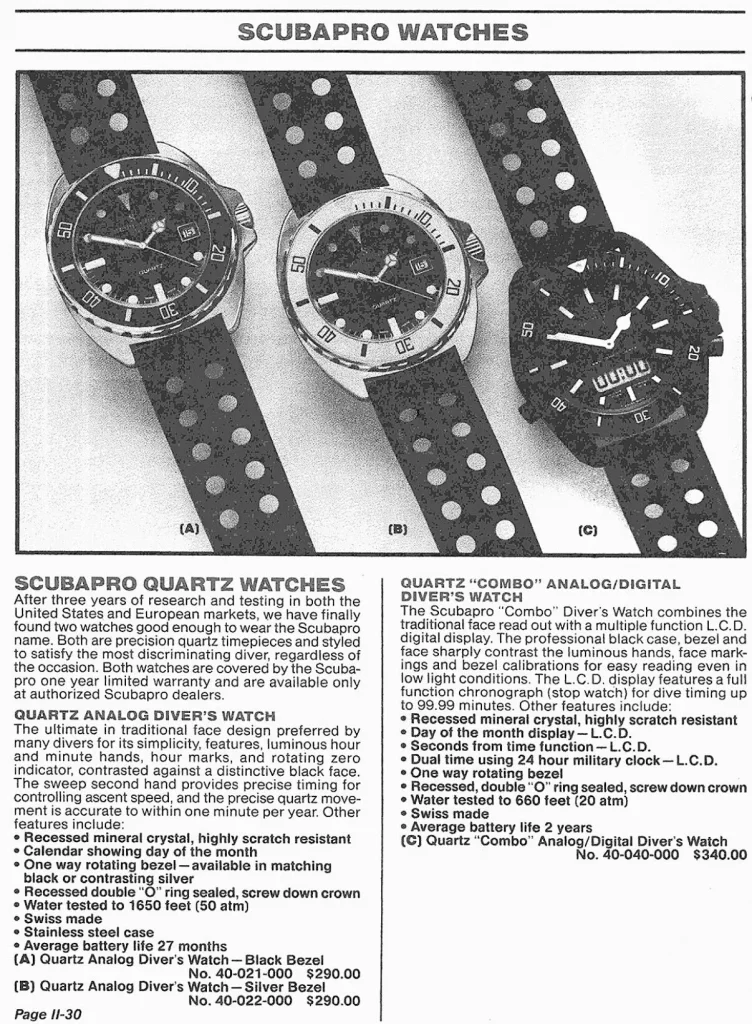
This layout may look familiar, as it was used in the Chronosport, and Scubapro watches which used the same movement. It was also used by Seiko themselves in a similar design in the reference H461-6000. It’s one of those quintessential ‘80s ana-digi designs that places the screen along the bottom of the dial, which can tap into a small set of handy functions, including a 12 or 24 hour indication with two time zones, a split-seconds chronograph accurate to 1/100th sec, date, and of course, an alarm. All of these can be accessed via the pusher at eight o’clock.

What sets the Breitling apart is, well, everything else happening on the dial. The Jupiter is the most extreme example, but the Pluton mixes in some unusual features without compromising the overall accessibility of the design. Check out the rehaut, those sets of numbers are VFR (Visual Flight Rules) and IFR (Instrument Flight Rules) flight level authorizations in degrees. You know, practical stuff. On the other side of the hour markers you’ll even find a decimal scale that breaks the hour or minute into 100 segments.
Best of all may just be the seconds hand, however. You’ll notice that it’s split, with one end behind the typical white needle, and the other being coated in black, save for an orange (or red?) tip making it easier to use when tracking the decimal scale, perhaps. It’s a little weird, and entirely awesome. These are the personality quirks that set the Breitling apart from the other variations mentioned above, and keep it interesting to this day, even compared to the modern Chronosport UDT from Momentum.
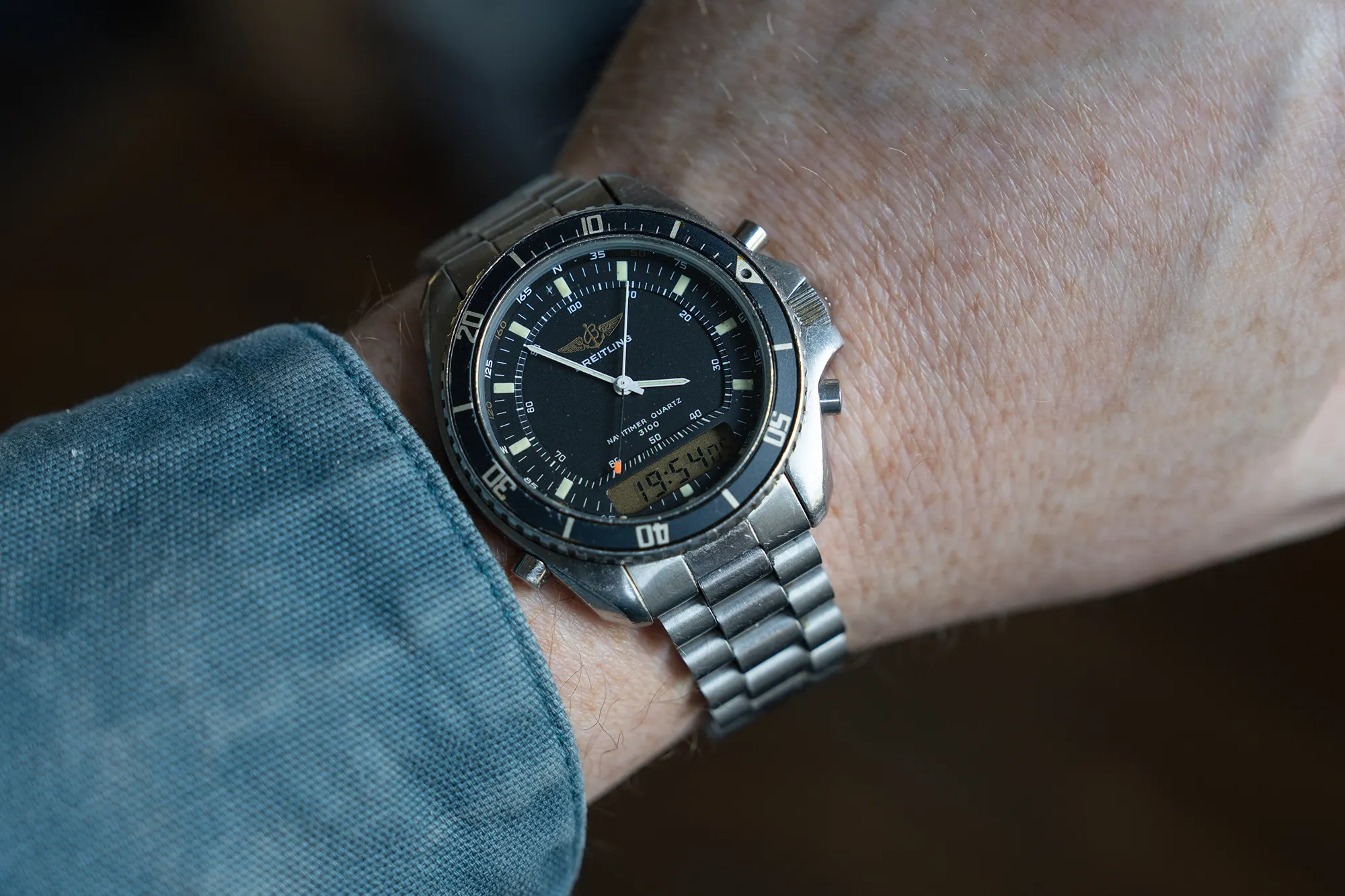
There’s a lot going on, but it’s all done in a humble manner, with no superfluous details in sight. The pencil hands are enough to be usable, the hour markers are just big enough to pick out at a glance, and there are no glossy or polished surfaces calling attention to themselves. The focus is tightly maintained exactly where it needs to be. In that regard, it feels a bit similar to something like the Sinn EZM1, but a little less hardcore. It’s truly a great balance that’s been found with these designs, and that’s not something you can say about modern Breitling instrument style/professional watches.
All of this is set within a steel Monnin style case that measures 40mm at the bezel, and a bit more at the mid case. It sits about 11mm in height, and 46mm from lug to lug. It’s an easy watch to get along with, even on a passthrough fabric strap. One interesting detail about the case is the placement of the crown and pushers below the center point of the dial, meaning the bottom lug is shorter than the top.
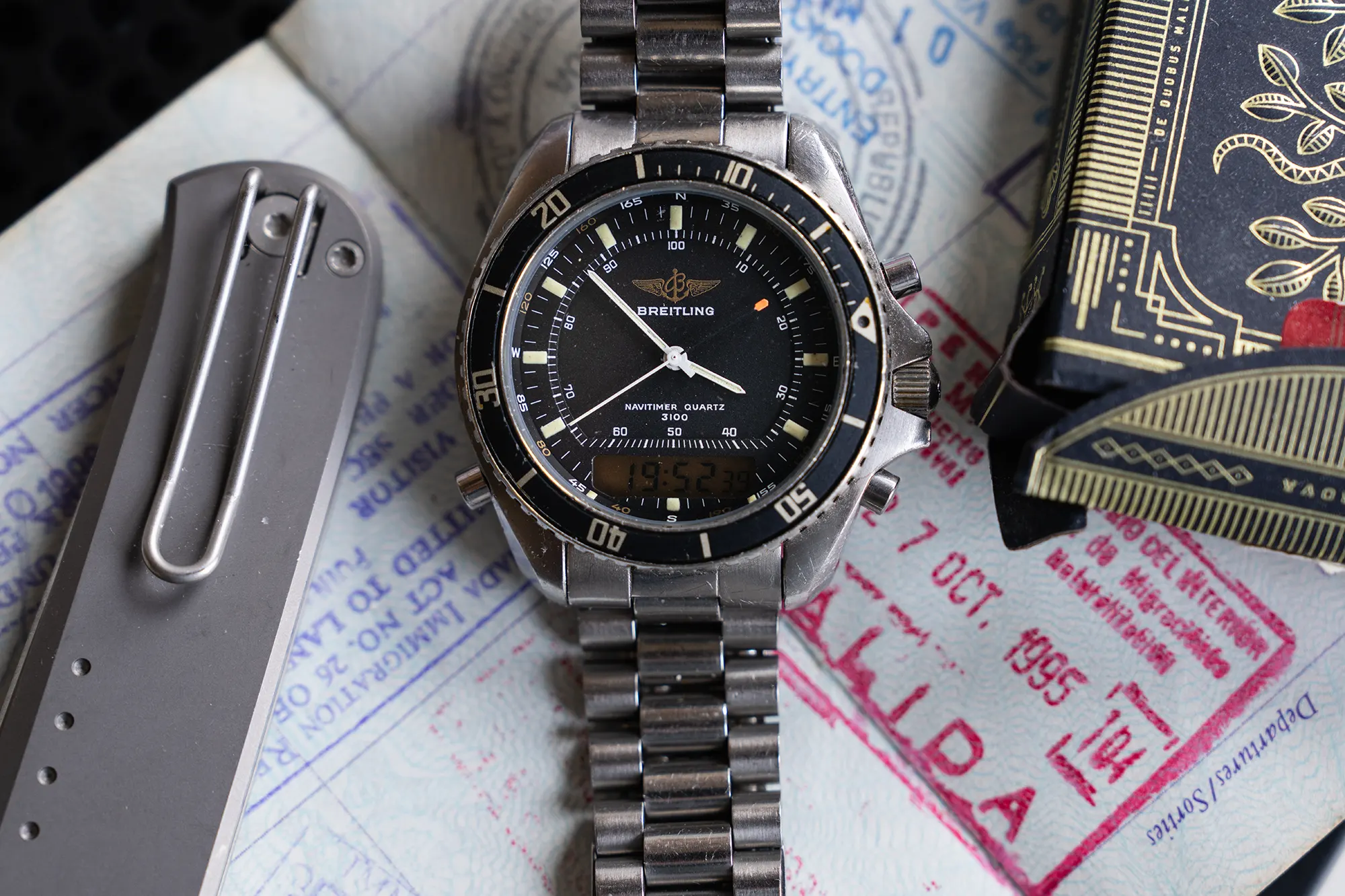
This watch comes from a transitional period for the brand, having been launched just after the Schneider family took the reins. Clearly, there’s not much in the way of design language that’s been carried through to today, but this is a collection that remained in production through the mid ‘90s. So there are plenty of variations to be found, including ones that use 12 hour bezels, or compass bezels, in addition to the dive style countdown bezel seen here.
The less than stellar movement choice is really the only thing that holds this watch back in any sense. With no real replacement parts being produced, it’s one of those whole movement replacement situations, but finding a good working example is worth the effort, if you ask me. Not only does the watch represent an interesting moment in Breitling’s history, it represents an interesting moment in watch design as it transitioned to the modern era.
The Breitling Pluton can be found at prices ranging from $500 to $1,200 depending on the configuration and condition. There are also a number of examples with dials not signed by Breitling, but by the company for which they were made. Check out the bezel on James Stacey’s Diavoli Rossi Pluton.
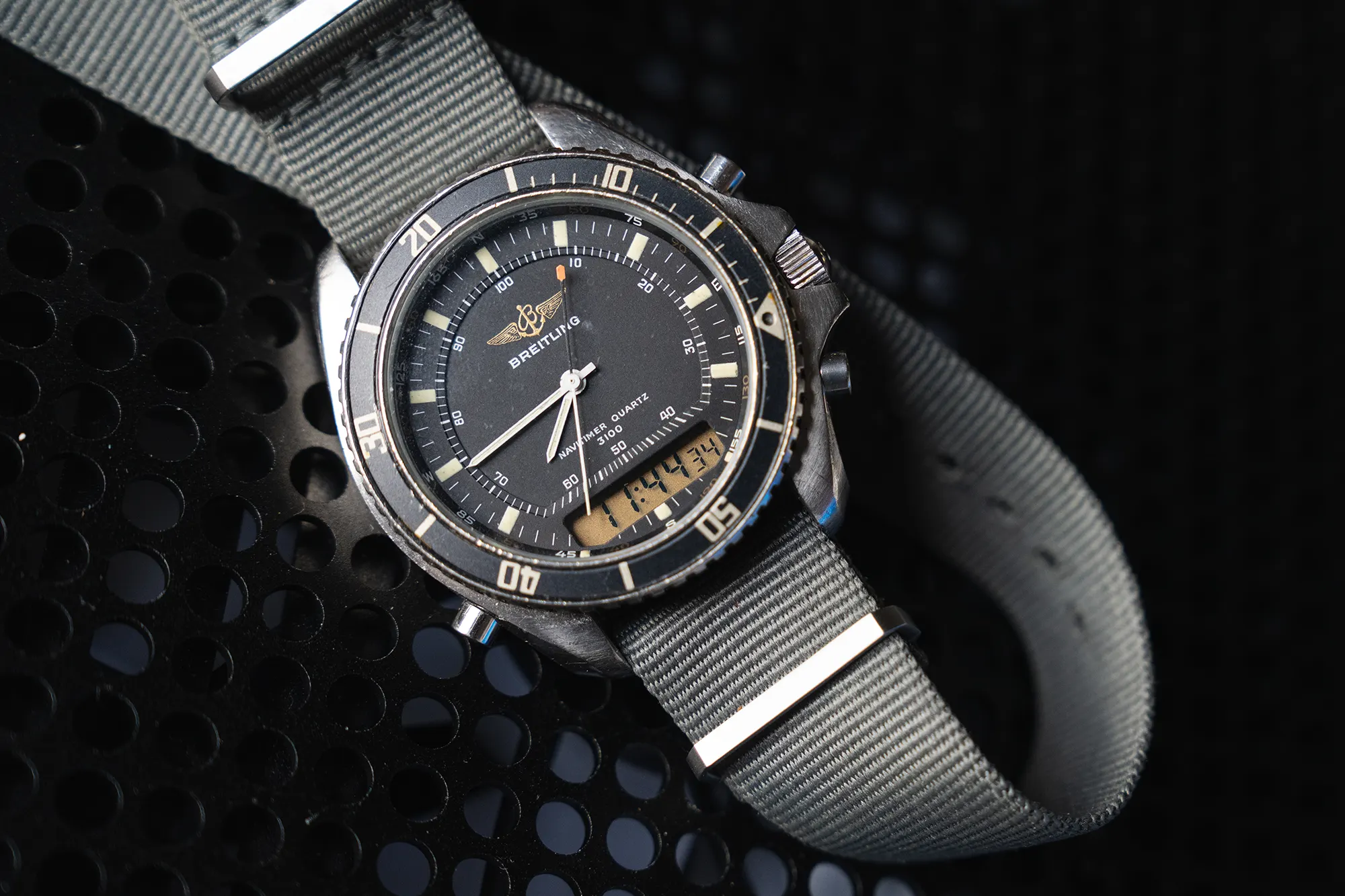
The Pluton isn’t like modern Breitling watches, and that’s one reason you may love it. Whatever your feelings on the brand, this is an example of their military, pilot, and diver bona fides, and it truly sings.

